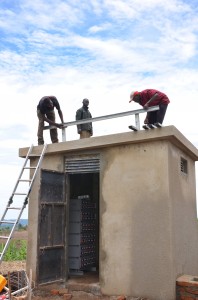There are more than 4 billion mobile connections worldwide. Over the coming years, many more millions of people at the “base of the economic pyramid” are expected to acquire mobile phones, greatly benefiting their lives, business activities and access to information. However, most of these new subscribers will not have direct access to electricity. This makes it more challenging and expensive for them to charge their mobile phone, not to mention to power the myriad of other daily functions for which electricity is important such as lighting, cooking and refrigeration.
The GSMA Development Fund believes that the issue of electrification is extremely relevant to mobile operators. The innovative nature of base of the pyramid markets has spawned creative solutions to the charging problem - primarily via entrepreneurs who provide electricity on a per-charge basis, powered either by their own access to the grid or through the use of portable car batteries. It seems likely that renewable energy devices, such as photovoltaic chargers, will provide a practical and environmentally friendly fix.
As part of its Green Power for Mobile programme, the Development Fund has conducted research into off- grid charging solutions for mobile phones. This study was conducted over a three month period (June-August, 2009) and included extensive research to identify emerging vendors, their products, and other players in the field. The process also included dozens of interviews and surveys of mobile operators and vendors covering 50 countries across Africa, Asia and Latin America.
The research has found that there is significant interest in off-grid charging solutions from mobile operators - over half those interviewed have already introduced, or are considering introducing off-grid charging solutions in the near term. At the same time, there is only limited understanding about the full scope of options and the associated social and business benefits.
This publication is intended to provide initial market information and a framework for decision-making about off-grid charging solutions. More practically, it lays out a series of key questions that the GSMA refers to as “Charging Choices” - to help companies think through the possibilities for off-grid charging. The paper is not a fully exhaustive review of all the existing players or initiatives in the market, and the Development Fund is not endorsing the products or companies reviewed herein. This publication is, however, a start of what the GSMA believes will be an important and exciting area of industry growth in the coming years.

